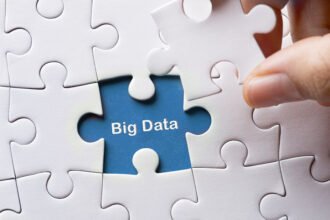There’s an analogy for what’s happening with Big Data today: the last mile in telecommunications. Businesses and public institutions have invested billions of dollars in the network backbone for telephone, cable, and Internet services. With access to these services from our homes, we can shop, play games, do research, get work done, conduct business, and communicate and socialize with friends and family.
There’s an analogy for what’s happening with Big Data today: the last mile in telecommunications. Businesses and public institutions have invested billions of dollars in the network backbone for telephone, cable, and Internet services. With access to these services from our homes, we can shop, play games, do research, get work done, conduct business, and communicate and socialize with friends and family. And there’s a fair amount of money to be made by telecom service providers from the monthly fees consumers pay for this access.
One of the big challenges in telecom is the “last mile” — bringing the telephone, cable, or Internet service to its end point in the home. It is expensive for the service provider to fan out the network from the trunk or backbone – to roll out trucks, dig trenches, and install lines. As a result, in some cases they pass high installation costs down to the end customer — or neglect to go the last mile at all, forgoing the revenue stream from those customers and leaving homes in rural communities without access to critical services.
An October 19, 2011 article in Hearst Communications’ Times Union, “Rural life carries $2,647 cost for cable,” describes this situation for people living in the rural community of Ballston, New York. Unlike families who live in more densely populated areas, a family in Ballston was asked to pay the Time Warner cable company $20,000 to install cable in their home. Time Warner suggested that to reduce the cost, several nearby families might join together and split it, which could bring it down to $2,647 per household. In situations like these, families have to either pay up or do without.
There is a “last mile” problem in Big Data, too
Big Data refers to the enormous volume, velocity, and variety of data that exists and has the potential to be turned into business value. According to IDC, the volume of digital content in the world will grow to 2.7 billion terabytes in 2012, up 48% from 2011 — and it’s rocketing toward 8 billion terabytes by 2015.* Big Data can be structured or unstructured. It can be created by people, calculated by systems, or generated by machines.
McKinsey Global Institute has found that Big Data creates value in a few important ways:
- Creating transparency
- Enabling experimentation to discover needs, expose variability, and improve performance
- Segmenting populations to customize actions
- Replacing / supporting human decision making with automated algorithms
- Innovating new business models, products, and services**
The challenges of ordinary BI are exacerbated by the volume, velocity, and variety of Big Data. Deriving the types of business value McKinsey describes requires taking Big Data the last mile into the hands of business users. The question is: how do you deliver data services to the people who need it? How do you empower business users with self-service and give them an excellent experience that will keep them coming back for more? How do you enable them to explore the data on their own and in groups to discover insights? To make discoveries that help them innovate? How do you help them simplify decision making, and turn decisions into action?
Today, most of vendors working on the problems of Big Data are focused on processing the data — they are focused on the backbone, to use the telecom analogy. This is an important problem area to address. The trouble is that working with Big Data requires a specialized skill set and level of technological sophistication that ordinary business users don’t have.
The last mile: this is where QlikTech fits into the picture. QlikTech’s mission is simplifying decisions for everyone, everywhere. With the QlikView Business Discovery platform we have user experience in our DNA. Our business model supports a fan-out to the business users — the corollary of the home in the telecom analogy. QlikView is a great complement to the capabilities of vendors focused on processing Big Data, as QlikTech partners like DataRocket, Dell Boomi, Informatica, and Trillium Software can attest. Big Data vendors and Business Discovery vendors like QlikTech can benefit mutually and grow the entire market opportunity by working together. Bring on the Big Data challenge! (See the related post, “QlikView and Big Data: It’s All About Relevance.”
* Source: “IDC Predictions 2012: Competing for 2020,” December 2011.
** Source: “Big data: The next frontier for innovation, competition, and productivity,” May 2011. McKinsey Global Institute is McKinsey & Company’s business and economics research arm.










